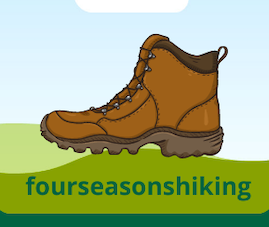I remember my first hike vividly. Before I even set foot on the trail, I spent quite a bit of time ensuring I was choosing the right one. You might be on the same path now, wondering where to start. The first step to a successful hike is assessing your physical fitness and comfort level with outdoor activities. Don’t worry; this doesn’t mean you need to run a marathon beforehand, but knowing your limits is key.
What draws you to hiking? Is it the tranquil forests, the majestic views from a mountain peak, or maybe the sound of a creek as it snakes along the trail? Your preference plays a significant role in the kind of trail you’ll enjoy. Beginners often benefit from scenic trails that offer plenty of natural distractions from the physical effort of hiking.
Time is another crucial consideration. If you only have a few hours, look for a short loop rather than an ambitious day-long affair. Judging a trail by its length is important, but there’s more to it. You’ll also want to consider the elevation gain, which is a fancy way of saying ‘how steep it is.’ Steep trails can be a challenge, so for your first time, it might be sensible to choose a flatter trail.
Weather and seasonal conditions can make or break your hike. A sunny day can turn a challenging trail into an enjoyable adventure, while an unexpected rainstorm can quickly turn it into a slippery ordeal. Check the weather forecast before you go, and always prepare for changing conditions, especially in the mountains where weather can be unpredictable.
With your readiness assessed and your preferences noted, you’re well on your way to choosing your first trail. Keep these considerations in mind, and you pave the way for not just a good hike, but a GREAT one. Next, let’s make sure you have all the essential information to help you select the best trail for your first outing and ensure you’re prepared for the experience.
Essentials for a Successful First Hike
I’ve just walked you through how to measure your preparedness and decide on the type of trail that best aligns with your interests and abilities. Now, let’s focus on the essentials that will help you make this first hiking experience both enjoyable and safe.
Research is your best friend. Start by seeking trails designed with beginners in mind; these typically have clear paths and are well-marked. Websites, apps, and local hiking clubs can be excellent resources for finding information on trails.
Do not underestimate the importance of proper gear and attire. Invest in a pair of sturdy, supportive hiking boots and moisture-wicking clothing to keep you comfortable throughout the hike.
Even the straightest trail can become confusing, so never hit the trail without a map and compass or a GPS app. Familiarize yourself with the area before setting out, and always let someone know where you’re going and when you expect to return.
Understanding and practicing trail etiquette is vital. Stay on marked paths, yield to other hikers as needed, and understand the basics of Leave No Trace to keep the trail pristine for others.
Lastly, hope for the best but plan for the worst. Pack a basic first-aid kit, and learn how to use it. Carry a whistle and consider a portable charger for your phone to ensure you have a means of communication in case of emergency.
Remember, your first hike is just the start of what can be a lifelong adventure in exploring the outdoors. Take it steady, stay safe, and most importantly, enjoy the journey!
In compliance with the FTC guidelines, please assume the following about links and posts on this site: Any/all of the links fourseasonshiking.com are affiliate links of which I receive a small compensation from sales of certain items.
https://osprey.pxf.io/c/5564501/1765694/20745

Learn More, Click on the Link Above


Thank you for this insightful guide on choosing a first hiking trail! Your tips on considering fitness levels, trail length, elevation gain, and weather conditions are incredibly useful for beginners. I also appreciate the advice on proper gear and trail etiquette, which are essential for a safe and enjoyable hiking experience.
HI Lonnie,
I love how you emphasized assessing personal fitness and comfort levels, which is such an important step for beginners. It’s great advice to start with a scenic, manageable trail to build confidence and enjoy the experience.
The section on considering time, elevation gain, and weather is practical and helpful. It’s a good reminder that hiking isn’t just about picking a trail but also about understanding your own needs and the environment. Checking the weather and preparing for changing conditions is crucial to ensure a safe and enjoyable hike.
It’s easy to overlook things like a map or compass, but they’re vital for safety, especially on less familiar trails. Overall, this guide provides a solid foundation for anyone new to hiking. It’s clear, practical, and encouraging, making it an excellent starting point for anyone looking to hit the trails for the first time.
Hi Kavitha, thanks again for your insight and experience that adds so much for my audience to consider!
Sincerely, Lonnie